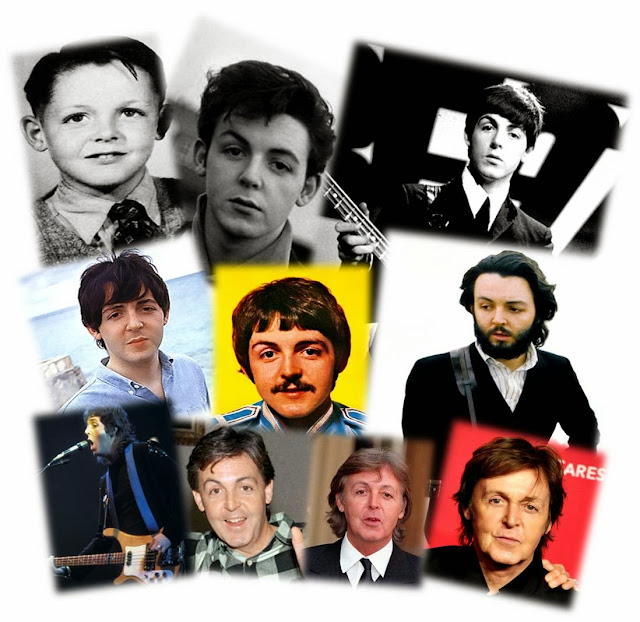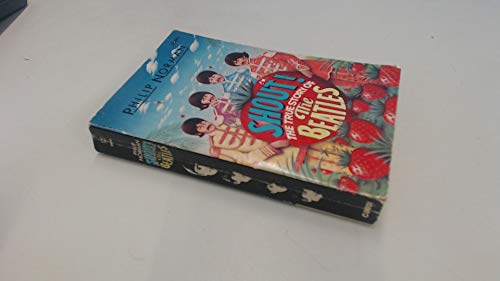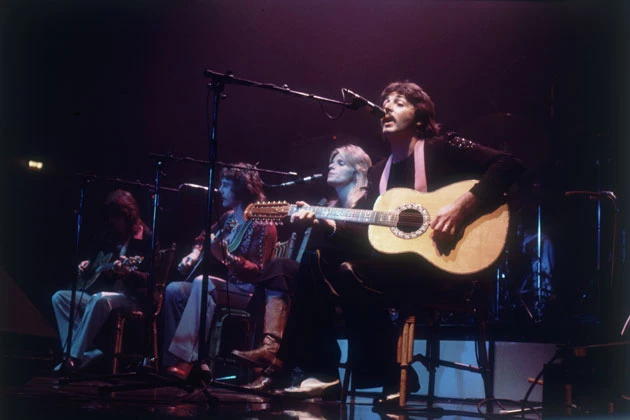
Paul McCartney Through The Years
www.arkansasonline.com
'Lightweight' Paul heavy on longevity
By Philip Martin
July 31, 2016
Few of us prefer to be judged on the work we did in our 20s.
We make mistakes and breakthroughs. We learn our crafts. If we don't get lazy or bored or derailed by misadventure, we get better. Like in the song.
"Getting Better" was a Paul McCartney song. He mapped it out, designed around the line "It's getting better all the time," picked up from Jimmie Nicol, the drummer who'd filled in for Ringo Starr on The Beatles' 1964 tour of Australia. (Nicol was a Beatle for 13 days; he got a gold watch and became a footnote. Someone should do a movie.) According to Beatles biographer Hunter Davies, it popped into McCartney's head one day in March 1967.

"I wrote on my magic Binder, Edwards and Vaughan piano in my music room," McCartney told Barry Miles, who reported it in his Beatles book Many Years From Now. "It had a lovely tone, that piano ... almost out of tune .... It's an optimistic song. I often try and get on to optimistic subjects in an effort to cheer myself up and also, realizing that other people are going to hear this, to cheer them up too."
It all fits with what we think we know about McCartney, the cute one full of silly love songs. But what makes the song for most of us -- people who write and think about pop music more than is healthy -- is not its bouncy quarter-note march feel, or the warm drone George Harrison provides via an Indian instrument called a tambura -- but some of the lyrics, provided largely in the counter-punctual backing vocals of John Lennon.
"It's getting better all the time," chirpy McCartney sings. "Can't get no worse," acerbic Lennon answers.
Two verses about escaping stifling teachers and school -- an edgy enough sentiment for what's essentially a song about love being a balm -- are topped by Lennon's confession: "I used to be cruel to my woman/I beat her and kept her apart from the things that she loved/Man, I was mean but I'm changing my scene ...."

"It is a diary form of writing," Lennon told David Sheff for his book All We Are Saying, "... I was a hitter. I couldn't express myself and I hit. I fought men and I hit women. That is why I am always on about peace, you see .... I sincerely believe in love and peace. I am a violent man who has learned not to be violent and regrets his violence. I will have to be a lot older before I can face in public how I treated women as a youngster."
Even acknowledging that domestic violence was seen in a different light in those days -- Ralph Kramden could threaten to send Alice to the moon every Sunday night on network TV's The Honeymooners -- it's a startling line to drop into a pop song, a tough bit of self-revelation that even in the age of Beyonce's Lemonade can jar the listener. For many of us, that's what the Lennon-McCartney partnership is about: John brings the tart, the stinging; Paul adds the sugar and stirs. It's why we think they needed each other, why neither alone approached the standard they set together.
But conventional wisdom tends to obscure aspects about each of the prime Beatles (to say nothing of the alchemy of all four together). It is easy to favor the verbal one, the witty and rebellious one. But McCartney was brought up poorer, without the luxury of risk-taking Lennon knew. Lennon's hyperverbalism is something writers understand (he may have made a real writer himself had he not been diverted into an apotheosized pop star/martyred voice of a generation). Lennon was cheated of a third act, so we extrapolate.
"It has always irked Paul that posterity regards him as the tuneful, cozy, safe side of the McCartney-Lennon partnership and John as the rebel, experimenter and iconoclast," Philip Norman writes in the recently published Paul McCartney: The Life (Little, Brown, $32). Norman, the author of two books about Lennon and 1981's Shout!, which (despite being despised by McCartney) is widely seen as the definitive group biography, contributed to the popular trope of McCartney as the bourgeois sap compared to Lennon's rebel with a cause. Shout!, published after Lennon's assassination, cast McCartney as manipulative and bottom-line focused.

It is easy to see snotty Lennon as the working class hero -- the heart and brains of the band -- while dismissing the others as role players. Starr was a comedian along for the ride, a fortunate mediocrity who (as Lennon is often misquoted as saying) "wasn't even the best drummer in The Beatles." Harrison was the strong third option. McCartney was Mr. Melody, but a bit of a bore. For lots of us who came of age in the '60s and '70s, the idea of Lennon as our favorite Beatle seemed as immutable as an astrological sign.
We were on his side when he buried Paul howling, "Those freaks was right when they said you was dead" at his erstwhile partner in "How Do You Sleep."
...
Most of us, that is. Because most of us don't speak McCartney's language as well. He was the poppy one, the one who made it all palatable, who could appeal to the mums. He had the easy charm of Richard Cory, teen-idol looks and a savant's gift for melody. It's not difficult to imagine how he might have succeeded without his partnership with Lennon -- Tony Sheridan, who used the pre-fame Beatles as his backing group, tellingly said he always thought that "Paul could probably make it without John, but John was never going to make it without Paul."
A McCartney who never met Lennon may have "made it" as a Tony Sheridan-level artist; a middling pop crooner and songwriter. While Lennon sans McCartney might have written novels. And absent The Beatles, our world would be very different.
But we ought to consider that during the mid-'60s, McCartney was the experimental and political one, the one who listened to John Cage and Sun Ra and funded an alternative newspaper, while Lennon was living in something less than domestic tranquility with first wife Cynthia in a posh London suburb.
McCartney prowled SoHo galleries; he was the arty Beatle who Yoko Ono wanted to meet when she came to London in 1966.
He was was only 28 years old when The Beatles broke up.
...
Casual fans scapegoat Ono (who settled for Lennon), but McCartney broke up The Beatles. He was the one who had plans moving forward. At 74, he's still seriously involved with music-making. When his tour hit Little Rock in April, they played 38 songs in a show that ran nearly three hours. Given the cultural enormity of his old band, it's impressive that 14 of the songs on the set list had nothing to do with The Beatles.
Look at it another way: The Beatles were together for roughly a decade, from 1960 to 1970. (They only actively recorded together for eight years, the breakup wasn't legally formalized until 1974 and McCartney's partnership with Lennon started in 1957, but let's keep the math simple.) McCartney's post-Beatles work began with McCartney, released in April 1970, a month before The Beatles' Let It Be. McCartney's tenure in The Beatles represents slightly more than 20 percent of his career and yielded 63 percent of the material he played in concert. (Little Rock wasn't atypical; McCartney's set list hardly varies on the still-current tour.)
Most fans are fine with nostalgia. McCartney seems to have resigned himself to it. This wasn't always the case -- during the Wings Over America tour of 1975-76, he seldom played more than five Beatles songs per show ("Yesterday," "Lady Madonna," "The Long and Winding Road," "I've Just Seen a Face" and "Blackbird," which McCartney has said was directly inspired by the nine black students who integrated Little Rock's Central High School in 1957, were a part of the regular set list).

Any argument over which Beatle has had the most satisfying post-1970 career should be settled by the self-curated anthology Pure McCartney (Hear Music). All the Beatles made some remarkable music in their respective solo careers (Starr's Beaucoups of Blues is my favorite Beatles solo album, with Harrison's All Things Must Pass a close second) but the sheer volume of McCartney's output is overwhelming. The 39 tracks on two CDs -- or four discs which comprise the 67-track deluxe edition -- of Pure McCartney make a remarkable case for McCartney's catalog being as deep and varied an exhibition of tunefulness as any recording artist ever.
Yes, the lyrics still run to the obvious and the saccharine, with only the occasional bit of poetic conciseness ("Well, the rain exploded with a mighty crash/As we fell into the sun/And the first one said to the second one there/I hope you're having fun"), but that seems to matter less these days. McCartney has sequenced these songs -- paying no attention to chronological order -- in order to show them to their best advantage, with an ear to the informing resonances within.

It is -- in a curious way -- like listening to the Burt Bacharach anthology The Look of Love, which came out in 1998. While different voices -- different artists -- performed Bacharach's songs, and McCartney's remarkable instrument (ever supple, though darkening late, just as Elvis' did as he aged) is constant, there's the same feeling of continuity, a sense of an uncommonly deep intelligence moving and directing the music. You can certainly quibble about what's included (too much from the forgettable Flaming Pie) and what's left out (no "Helen Wheels," nothing from 1989's Flowers in the Dirt, one of McCartney's best, which included three high-profile collaborations with Elvis Costello), but it's a jaw-dropping closing argument.
It's a lot like veteran Norman's Paul McCartney: The Life. It doesn't really tell us anything we didn't already know, but it presents the familiar in a way that forces re-evaluation: Paul McCartney is a healthy Brian Wilson with an indefatigable work ethic.
Style on 07/31/2016
Print Headline: 'Lightweight' Paul heavy on longevity

Paul McCartney: The Life by Philip Norman

No hay comentarios:
Publicar un comentario